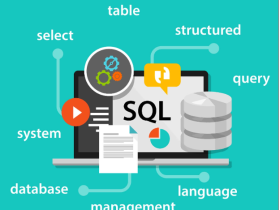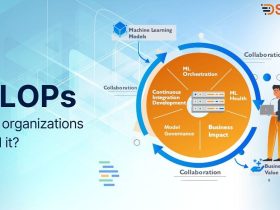Introduction
In the field of NLP, the main goal is to create a computer system that can understand, process, and generate human language. This involves various tasks, such as text classification, machine translation, sentiment analysis, and language modeling. Over the years, different neural network architectures have been developed to tackle these tasks. RNNs and CNNs were considered the state-of-the-art models for NLP tasks until recently, when transformers emerged as a new and more powerful approach.
Overview of RNN and CNN
RNNs are a type of neural network architecture that has shown great success in sequence modeling tasks. They are designed to process sequences of inputs, such as sentences or time-series data. RNNs have a recurrent structure that allows them to capture the context and dependencies between different inputs in a sequence. However, RNNs suffer from the problem of vanishing gradients, which makes it difficult for them to capture long-term dependencies.
CNNs, on the other hand, are a type of neural network architecture that is widely used for image recognition tasks. They are designed to extract features from the input data by applying convolutional filters. CNNs have been adapted for NLP tasks by treating words as images and using 1D convolutional filters to extract features from sentences. However, CNNs have limited ability to capture the relationships between different words in a sentence.
What are Transformers?
Transformers are a type of neural network architecture that was introduced in 2017 by Vaswani et al. They were designed to overcome the limitations of RNNs and CNNs in NLP tasks. Transformers are based on the idea of self-attention, which allows them to capture the relationships between different words in a sentence without relying on a recurrent structure.
Transformer architecture
The transformer architecture consists of an encoder and a decoder. The encoder takes a sequence of input tokens and generates a sequence of hidden representations. The decoder takes the hidden representations generated by the encoder and generates a sequence of output tokens.
Attention Mechanism
The attention mechanism is a fundamental building block of the transformer architecture. It allows the model to focus on different parts of the input sequence when generating the output sequence. The attention mechanism assigns a weight to each input token based on its relevance to the current output token.
Self-attention in Transformers
The self-attention mechanism is a variant of the attention mechanism that allows the model to attend to different parts of the input sequence when generating the hidden representations. In self-attention, the input tokens are transformed into queries, keys, and values. The attention weights are calculated based on the dot product of the query and key vectors. The output vector is then calculated as the weighted sum of the value vectors.
Pre-training and Fine-tuning of Transformers
Transformers are typically pre-trained on large amounts of unlabeled data using a technique
Pre-training and Fine-tuning of Transformers
Transformers are typically pre-trained on large amounts of unlabeled data using a technique called masked language modeling (MLM). In MLM, some of the input tokens are randomly masked, and the model is trained to predict the masked tokens based on the context provided by the other tokens in the sequence. This pre-training step allows the model to learn general features of the language.
After pre-training, the model is fine-tuned on a specific NLP task using labeled data. Fine-tuning allows the model to adapt to the specific requirements of the task and achieve state-of-the-art performance.
Advantages of Transformers over RNN and CNN
Transformers have several advantages over RNNs and CNNs in NLP tasks:
- Transformers can capture long-term dependencies between different words in a sentence, which is difficult for RNNs due to the problem of vanishing gradients.
- Transformers can capture the relationships between different words in a sentence, which is difficult for CNNs due to their limited ability to capture the context of the input.
- Transformers are computationally efficient, as they can process the entire input sequence in parallel, unlike RNNs, which require sequential processing.
Disadvantages of Transformers
While transformers have many advantages, they also have some disadvantages:
- Transformers require a large amount of pre-training data to achieve state-of-the-art performance.
- Transformers are computationally expensive compared to simpler models like RNNs and CNNs.
- Transformers can overfit to the pre-training data, which may lead to poor performance on specific NLP tasks if fine-tuning is not done properly.
Applications of Transformers
Transformers have been successfully applied to various NLP tasks, including:
- Machine translation
- Text classification
- Language modeling
- Named entity recognition
- Sentiment analysis
- Question-answering
Future of Transformers
Transformers are a rapidly evolving field, with new models and techniques being developed regularly. Some of the areas of research in transformers include:
- Efficient training of large transformers
- Multi-lingual transformers
- Task-agnostic transformers
- Transformer interpretability
Conclusion
Transformers have emerged as a powerful approach for NLP tasks, with several advantages over traditional models like RNNs and CNNs. They have been successfully applied to various NLP tasks and are a rapidly evolving field. While transformers have some disadvantages, their advantages make them an essential tool in the NLP toolbox.










Leave a Reply